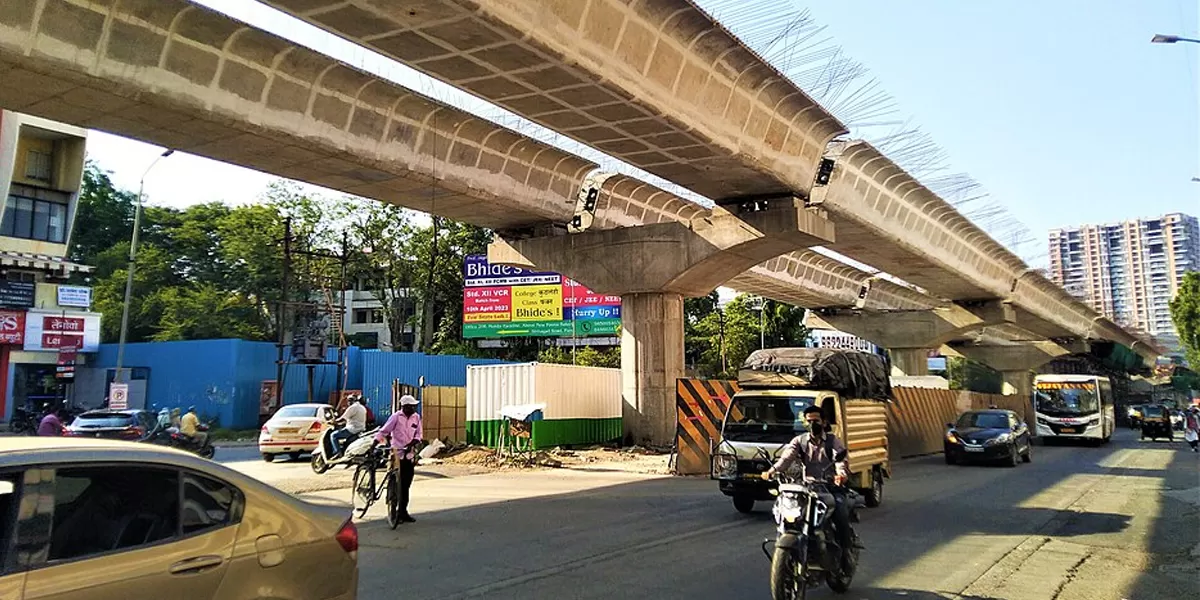Pune is on the brink of a major urban infrastructure upgrade as the Pune Metropolitan Region Development Authority (PMRDA) confirms the Savitribai Phule Pune University (SPPU) Chowk double-decker flyover is nearing completion and set to open by 30 June 2025.
Strategically positioned on the heavily used Ganeshkhind Road, the project is designed to significantly ease traffic congestion and improve flow across critical junctions. The innovative two-tier structure features the Hinjewadi–Shivajinagar Metro line on its upper deck and a road-level carriageway below to streamline vehicular traffic.
This integrated flyover is expected to decongest key intersections, including Senapati Bapat Road, Baner, Aundh, Pashan, and University Circle, with anticipated reductions in travel time and overall improvements in connectivity.
According to PMRDA officials, structural work is in its final phase, with all 32 pillars erected. Installation of 55-metre-long steel girders—some up to 20 metres wide—is progressing steadily. Supporting structures at E-Square and Baner Road are complete, while utility relocation near the Baner ramp is nearly finished.
Although originally scheduled for completion in May, delays linked to land acquisition and road widening have pushed the timeline slightly, with full commissioning now expected by the end of June. However, ramps towards Aundh and Shivajinagar are set for partial public use from 20 May and full operation by mid-June. Construction of the Pashan ramps continues and will take a few more months.
The flyover is closely aligned with the broader Pune Metro initiative, offering a future-ready multimodal transport solution. It includes provision for metro rail on the upper tier and is designed to link with proposed BRTS corridors and pedestrian infrastructure—paving the way for a more sustainable urban mobility system.
Despite some disruption during construction, the project has drawn strong public support as a long-term solution to rising traffic pressures in a rapidly growing city. Local residents and business owners have urged authorities to complete the remaining works promptly.
The SPPU Chowk flyover secured all necessary environmental clearances before construction and has followed eco-friendly practices such as prefabricated components, dust control systems, and the use of sustainable materials.
Experts suggest this model could serve as a blueprint for mid-sized Indian cities balancing infrastructure development with citizen-centred and climate-conscious planning.
Once operational, the flyover is expected to reduce signal waiting times, curb vehicle idling, and improve air quality in the area. Final load testing and alignment works are due shortly, marking a key step toward a cleaner, more efficient transport network in Pune.


